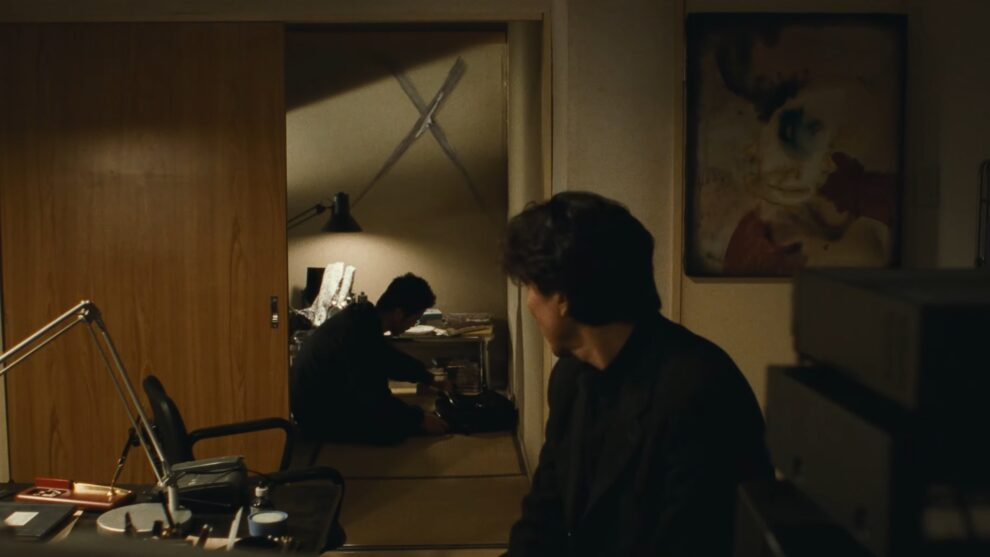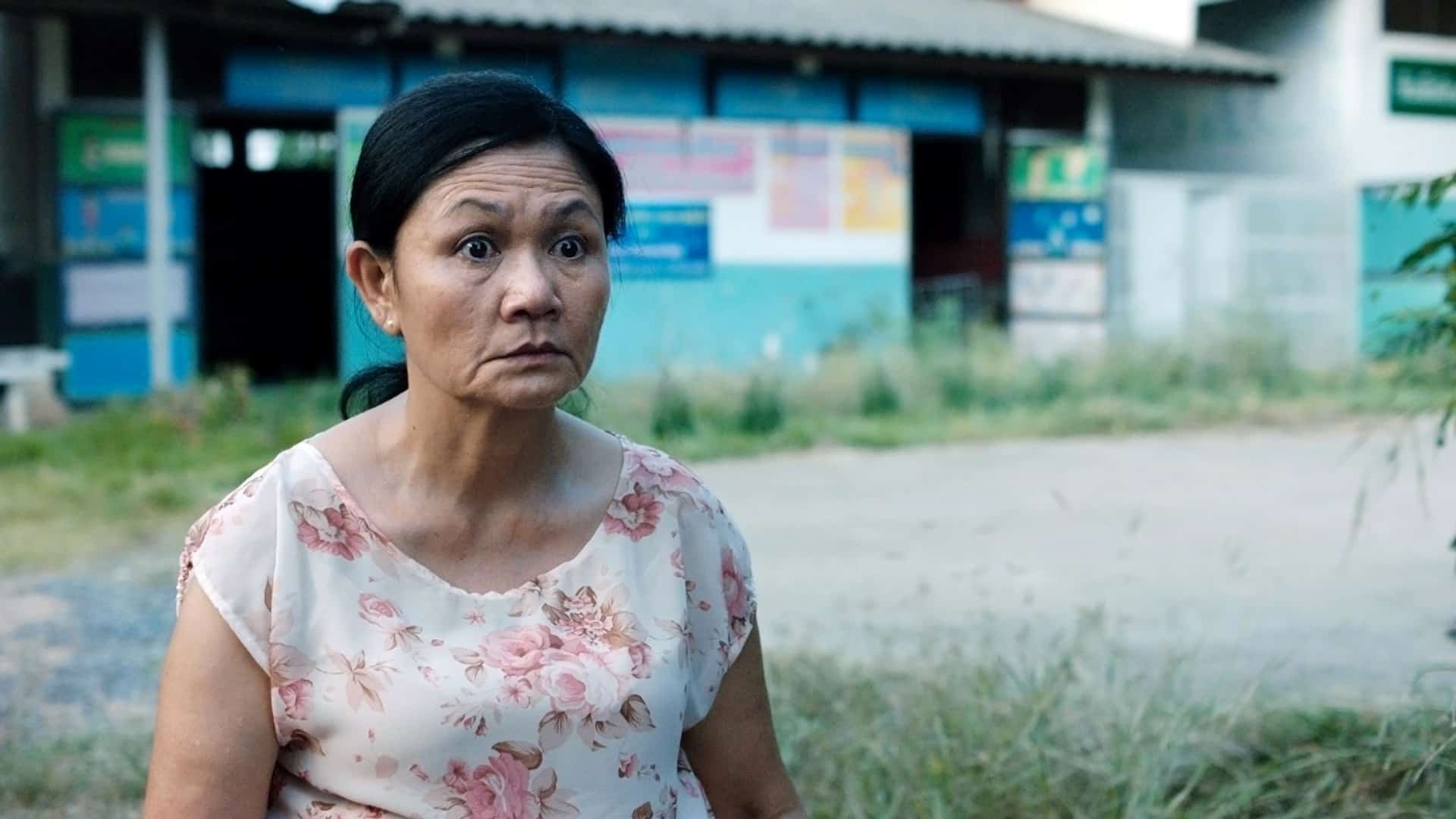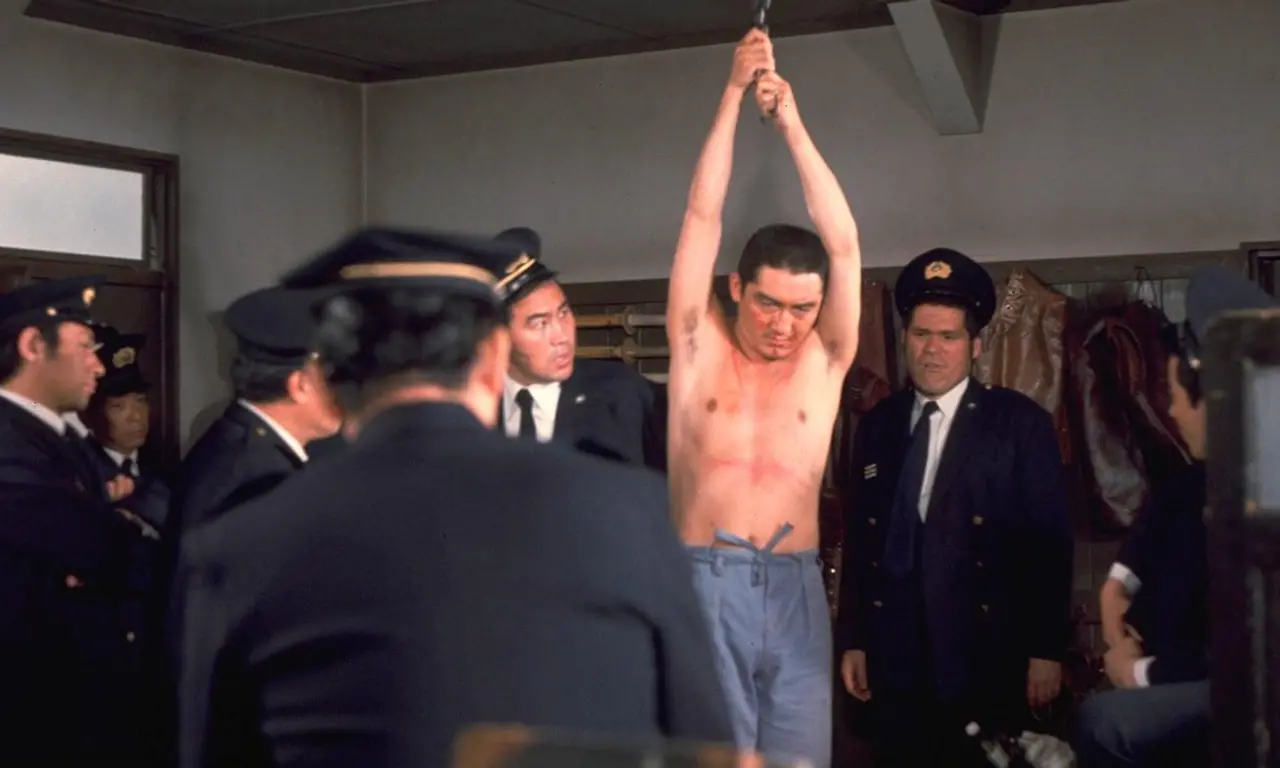A deep darkness inhabits Kiyoshi Kurosawa's “Cure”, on a philosophical and literal level. It's a serial killer psychological horror that puts forward the idea that our collective social psyche is susceptible to extreme persuasion, with anyone from the most ordinary person to those with a duty of care to the public (the police, doctors, etc.) being capable of clinical, repetitive, removed violence. It follows Detective Kenichi Takabe (Koji Yakusho) through an incomprehensible mystery where a strange epidemic of hypnosis is convincing unconnected people to attack others and slaughter them by carving a large X from their neck to their chest. At the centre of it is the manipulative, enigmatic Kunio Mamiya (Masato Hagiwara), a drop-out university student with apparent amnesia and a trusty lighter that inexplicably casts a spell on whoever looks into the flame. The case is not open and shut; how the phenomenon began remains mostly a mystery, despite the efforts of Dr Sakuma (Tsuyoshi Ujiki as a forensic psychologist and consultant for Takabe) to research and unearth the truth around the murders. The scenes between Takabe and Sakuma are often expository, allowing some downtime after sequence upon sequence of psychological terror that deepen the audience's understanding of the situation, maybe acting as a balm to them, giving the possibility that the mystery will be solved and the murders will stop. Yet with this Scene of the Week, a breakthrough in the case after discovering Mayima's interest in Franz Mesmer (and mesmerism in general) sees Takabe visit Sakuma in his home where a terrible development occurs.
As with most of Kurosawa's interiors, there is a degree of decrepitude to Sakuma's apartment. His walls are lined with books, implicitly establishing his academic credentials while emulating the distinct cosiness of a cubbyhole. Yet there is a sickly green hue to the room at night, with no natural light coming in through its one window even from streetlights. Nonetheless, Sakuma has brewed a fresh pot of coffee for his friend as they sit in front of a small CRT television to see what may well be the key to the entire case.
The scratchy VHS tape plays some ancient footage (likely from the 19th century) of a woman sat in center frame. She is zen-like, relaxed and at peace. To the left of the frame, a man is sat, obscured in darkness. Sakuma draws Takabe's attention to the motion his hand makes, playing it frame by frame. He points and descends his index finger diagonally, before doing the same in the opposite direction. It is, unmistakably, an X. Is this where the phenomenon originates from? Kurosawa's trademark locked-off camera staring at a person in a frozen state has always been deeply unsettling, none more so than in his iconic dancing ghost scare in his other most famous work, “Pulse”. The implications in this scene, however, suggest that whatever evil originates from this mysterious bit of film has been around for a hundred years by now. Even though it has been buried in archives for decades, how many people have been affected by it? Even watching it through the lens of Kurosawa's film and the veneer any fictional story holds, it feels wrong, like we should not, no, CANNOT be seeing it.
Sakuma elaborates on what the footage could mean. Explaining a part of the history of mesmerism in Japan, he tells Takabe that this particular subject (a woman called Suzu Murakawa) was being treated for hysteria, yet still went on to kill her own son in the exact same way that the modern day victims have been dispatched. With a fresh cup of joe, he wanders into the corner of his study, going on to recount that mesmerism was once known as “soul conjuring”, associated with the occult and the ceremonial slaughter of individuals. Sakuma's eyes lock onto nothing in particular as he disassociates from the room.
Before the audience knows it, the grammar of the film has broken from its elliptical murder sequences, and calm, considered expository moments, and in they go to what Sakuma is seeing. The smelter outside Mayima's apartment. The caged monkeys that live next door. A book on mesmerism with its practitioner's face missing. An abandoned factory building. A face staring through its windows. The corridors of a mental asylum. Sakuma finally arrives in Mayima's cell, which now has the disgusting bathtub seen earlier in the film, adorned with the trophy of a mummified, bound primate. Takabe is also there, shrouded in shadow, slowly approaching as a cold wind brushes his hair and coat, backing Sakuma into a corner.
“Cure” then snaps back to its traditional mode of exposition as the real Takabe breaks Sakuma of his vision. Sweating and exhausted, Sakuma says Mayima may well be the “missionary” of this movement, “sent to propagate the ceremony.” A pregnant silence hangs in between them, before Sakuma shakes himself of his stupour and apologises: he's tired, “in too deep.” The camera dollies along from left to right, following Sakuma until he leaves frame. We hold our gaze on Takabe, troubled and sat down in front of the television. The entrance to Sakuma's bedroom hangs over Takabe's shoulder, a pitch-black space where Sakuma enters. After a second, a lamp switches on, and on Sakuma's bedroom wall is a large X.
To call this cinema's most understated jumpscare doesn't quite do it justice. Like seeing a predatory animal approaching at a distance, with our hero oblivious to the danger he's in, the X represents the inscrutable malice at the film's centre. Although simply drawn with black paint, the X has torn the wallpaper. Each stroke of the brush must have been fast and hard; the top of the letter is thick, before descending and becoming sharper and sharper. When Takabe turns to see his friend opening a briefcase, he wastes no time in asking him what's on the wall. He knows full well what it means, and Sakuma's answer only confirms it. A long silence lingers as Sakuma looks back and forth at the wall, then Takabe, then the wall again. “Oh, that?” He states it's there to help him think, but begins to scratch and scratch and scratch at his handiwork. Takabe surmises that he must have met Mayima, yet Sakuma has no memory of it.
Whether or not the good doctor and “Cure”‘s central villain ever crossed paths is secondary, given the context of the potentially cursed tape both he and his friend have watched. This scene contains all of Kurosawa's signature moves: masterful use of dead space, leftfield editing choices, ambiguous portent on the page and on the screen. Anchored by Yakusho and Ujiki's buttoned-down turns, this sequence deep in the third act of “Cure” escalates its stakes and throws all semblance of hope out the window. Up until now, the relationship between Takabe and Mayima has proved to be intensely combative, but Takabe has emerged mostly unscathed, bar the odd hallucination here and there. Now, he's face to face with his friend and colleague who could at any moment draw a blade across his throat from left to right and vice versa. Any sense that the impending dread of the first 90 minutes of the film may subside with a neat resolution is completely gone, leaving a distressing finale that completely upends its protagonist's grip on reality. The light switching on in Sakuma's bedroom is the light switching off for the film, the final plunge into the moral darkness it threatens with every scene yet only delivers in sharp intervals. “Cure”‘s eventual destination sees Takabe getting too close to the truth, with horrific ramifications for everyone he meets from that point onwards. Yet without this enrapturing scene, the film cannot pivot to that conclusion, highlighting the crucial importance of Kurosawa's masterful control of verbal and visual information that pushes his characters in the most depressing, but maybe most coherent direction.















